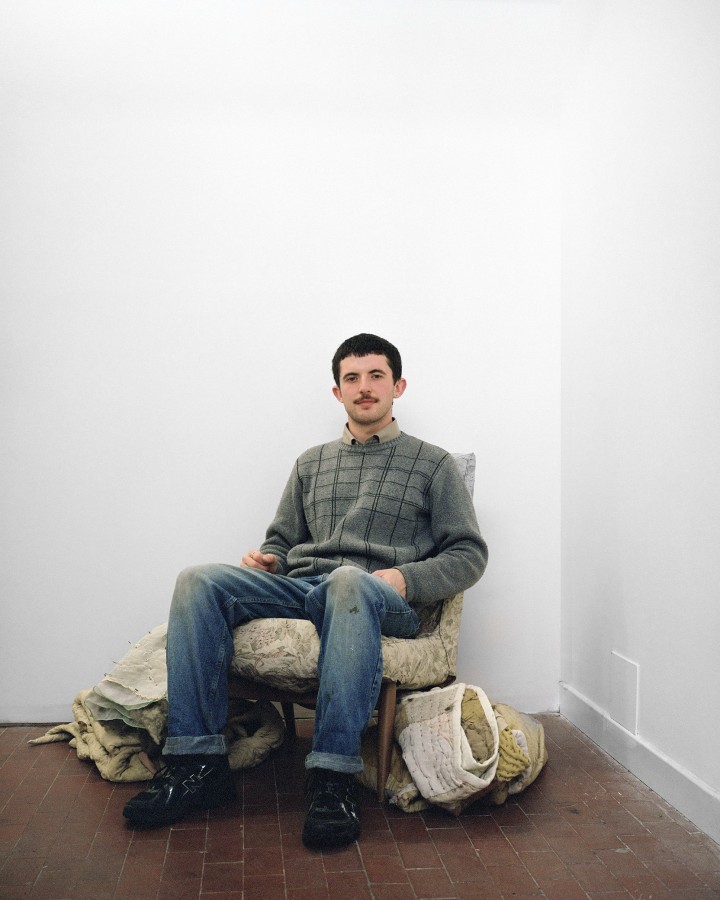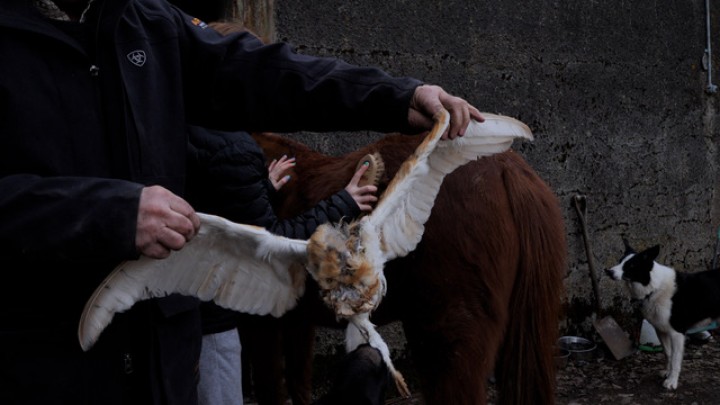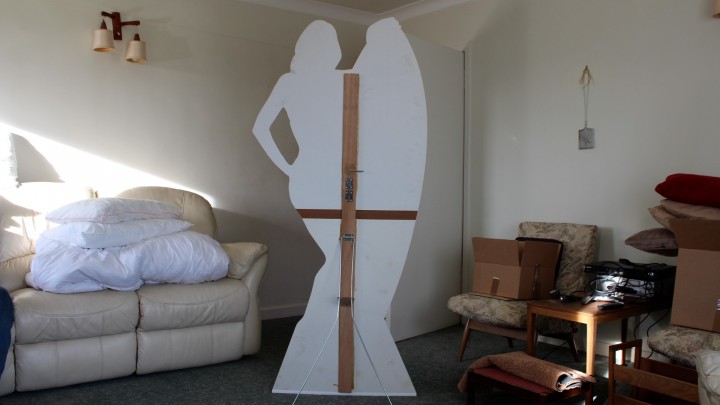Scottish Art News
Latest news
Magazine
News & Press
Publications
Interview: Hamish Halley
By Neil Cooper, 06.08.2025

When Hamish Halley was working one day, he came across a photograph in a drawer of a cat. While this pre digital artefact of what was presumably a long lost pet was a poignant enough remnant of somebody’s life, it was what was written on the back of the picture that captured Halley’s attention. The two words, ‘please keep’, not only stressed the importance of the photograph to its owner, but was a firm pointer to future rummagers to preserve it for posterity.
The phrase subsequently became the title of Halley’s new short video work that premieres at Edinburgh Art Festival 2025. It features footage taken while Halley was clearing out his grandmother’s Perthshire farmland home after her death. This is seen alongside captures of the former Perth Museum and Art Gallery collection Halley visited as a child being moved to its new home in the former Perth City Hall as the newly dubbed Perth Museum.
 Hamish Halley, still from 'please keep,' (2025). Courtesy of the artist and the Edinburgh Art Festival
Hamish Halley, still from 'please keep,' (2025). Courtesy of the artist and the Edinburgh Art Festival
“I think the two things were happening around the same time,” says Halley on a break from editing. “I started noticing the similarities and differences with those two processes, from the personal and domestic scale in my granny’s house, and then the more institutional approach from the museum. There was this same focus on local history, I suppose, because both things were happening in the area that my grandparents are from.”
Both transitions documented in Halley’s video come from a personal set of histories, even as the environments captured on screen are now no more.
“It’s already quite nostalgic,” Halley reflects. “The museum in the form depicted in the video is gone, and the house where my father and my sister now live, and where I go back to when I’m visiting, is very different now to how it appears in the video.”
The result forms part of Halley’s eighteen-month residency as EAF’s first Early Career Artist-in-Residence scheme. This evolved out of the festival’s PLATFORM programme that did something similar. The new initiative is produced in partnership with the Hugo Burge Foundation, who provided a studio residency in the Borders, where Halley developed 'please keep'.
Halley’s new work is premiering at The People’s Story Museum, the Edinburgh High Street emporium that focuses on documenting the city’s working class communities since the eighteenth century.
“I think it’s a great spot for the work,” Halley says. “The museum’s displays are not dissimilar to the ones I was capturing in Perth's old Museum of Natural History, but with a different focus on the people of Edinburgh. That ties in with my interest in the particular modes of displaying objects and images in conjunction with each other that these museums are utilising.”
Since Halley graduated from Goldsmith’s in 2021 following a foundation year at Duncan of Jordanstone in Dundee, his work has mixed and matched textiles and printmaking as well as video.
 Hamish Halley, still from 'please keep', (2025). Courtesy of the artist and Edinburgh Art Festival
Hamish Halley, still from 'please keep', (2025). Courtesy of the artist and Edinburgh Art Festival
“I think my approach to editing with video is kind of similar to the way I'm interested in textiles,” he says, “in that its patch-working, and sewing things together. I think, conceptually, I've been thinking about quilt making, because it has the top fabric, which would be made of many different fabrics, but also has the stuffing and the reverse, and then you pierce through them all to create some something else.”
Halley’s new video isn’t the first work to explore family matters close to home. 'Nicky Tams' (2021) is a video shown at Bloomberg New Contemporaries in 2022 that focuses on Halley working with his grandfather to try and remember the Scots folk song that gives the work its title. Again, this is about preserving something before it disappears.
“Please keep began from an urge to document something that's about to be gone,’ says Halley, “like you're about to move the furniture around and pack everything away, and it's not going to be your grandparents house in the same way you remembered it anymore. It began with that impetus to record it for myself and my family, but then it developed into my artistic interests as well. Serendipitously, because the whole museum thing was happening at that time, everything started connecting up.”
While Halley works instinctively, vague future plans may involve him using tinsel and beeswax as materials. In the meantime, the Proustian sense memories of please keep have in some way immortalised both his grandmother’s house and the Perth museum archive.
“I think there's something about the weight of someone else's possessions that you feel obliged to care for in the same way that the museum is obliged as an institution to preserve artefacts, “ Halley says. There's something tender in the phrasing of ‘please keep’. When people leave things to you, they might have asked you, or they might not have asked you to look after them, but they don't know what you'll do with them, and they're not here to worry about it. So, for me, it crystallises a lot of things.”
In terms of Halley’s grandmother’s house, most stuff has been put away rather than thrown out.
“That in itself is a different problem," says Halley, "because we still have to sort through it at some point. But the status of objects is endlessly interesting to me. Because I know something belonged to my granny, it's important to me, even though I've not seen it until she died. That whole idea of marking something ‘please keep’ so it doesn't get chucked out, that's already putting a value on it.”
To illustrate this, Halley brings up another memory.
“My gran used to write on receipts when she was organising her accounts,” he says. “Something like that which she left behind has resonance, but it’s practical as well as emotional.”




